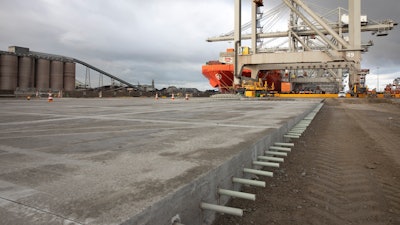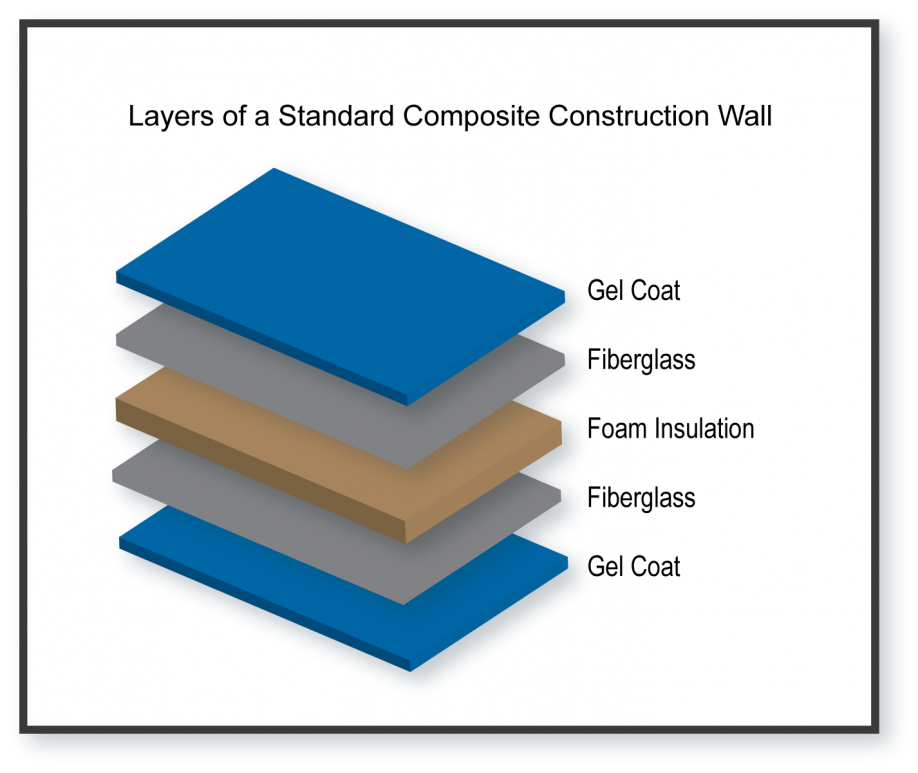Exactly How Composites are Altering the Landscape of Building Materials
Exactly How Composites are Altering the Landscape of Building Materials
Blog Article
Opening the Environmental Benefits of Recycled Compounds in Building and Layout
In the realm of building and design, the utilization of recycled compounds holds significant guarantee for improving sustainability practices and lowering ecological effect (composites). By incorporating these cutting-edge materials, there is a prospective to resolve crucial problems such as waste reduction, power conservation, and a reduction in carbon impact. The change towards a more lasting future in these sectors depends upon unlocking the full possibility of recycled compounds. This conversation will certainly explore the diverse advantages and obstacles related to integrating recycled composites into building and construction and design, providing a look right into the transformative opportunities that lie ahead.

Ecological Influence Decrease
The decrease of ecological influence via using recycled compounds in construction and design plays an important function in sustainable practices. By including recycled compounds right into structure products, the building and construction sector can dramatically lower its carbon impact and add to a more eco-friendly future. These lasting products, made from repurposed plastics, timber fibers, or various other recycled components, use a practical alternative to typical building materials without endangering on top quality or resilience.
Recycled compounds assist divert waste from landfills and minimize the requirement for removing resources, hence conserving natural deposits. Furthermore, the production procedure of these composites typically consumes much less energy and emits fewer greenhouse gases contrasted to creating virgin products (composites). This shift in the direction of utilizing recycled compounds not only lessens environmental damage yet also advertises a round economy by urging the reuse of materials that would otherwise be disposed of
Waste Reduction
With a focus on lessening waste in construction and style, the assimilation of recycled composites uses a lasting solution to decrease ecological influence. Waste minimization is an essential aspect of lasting practices, and the usage of recycled compounds offers an opportunity to accomplish this objective effectively. By utilizing materials that have actually currently offered their initial function, such as recycled plastics or recovered timber fibers, the building and design industries can substantially lower the quantity of waste created and sent out to garbage dumps.
Recycled compounds have the prospective to divert significant quantities of waste from conventional disposal techniques, adding to a much more circular economic climate where sources are used effectively. Furthermore, the production process of recycled composites typically consumes less power and generates less exhausts contrasted to virgin products, additionally minimizing the ecological impact of building and construction and layout tasks.
Applying waste reduction methods with the consolidation of recycled composites not only assists in conserving natural sources yet likewise promotes a more sustainable method to building and designing for a greener future.
Power Preservation
Integrating recycled composites not only decreases waste in construction and layout but also plays an essential role in boosting power conservation practices within the sector. The usage of recycled composites in building can substantially add to power conservation via different ways. The manufacturing of virgin materials typically calls for substantial power inputs, whereas utilizing recycled composites eats less power, thereby minimizing overall power intake. In addition, incorporating recycled composites can add to better insulation homes in structures, reducing the requirement for too much home heating or air conditioning, and as a result decreasing power usage for environment control. Furthermore, the lightweight nature of lots of recycled compounds can result in lighter frameworks, requiring less power for transport and installation. By promoting the usage of recycled compounds in construction and design, the sector can make significant strides towards accomplishing energy effectiveness and lowering its carbon impact, ultimately adding to a much more sustainable constructed setting.
Carbon Impact Decrease
Enhancing sustainability methods with the application of recycled compounds in building and construction and layout substantially minimizes the carbon footprint of the industry. By including recycled products right into the production of composites, the need for virgin sources lowers, causing lower energy consumption and greenhouse gas exhausts related to typical production processes. This decrease in carbon impact is vital in combating climate change and advertising a more eco-friendly approach to building and construction recommended you read and style.
The carbon footprint decrease attained through the fostering of recycled compounds straightens with the international press towards sustainable techniques and the decrease of industrial discharges. Inevitably, by prioritizing the combination of recycled compounds, the industry can make substantial strides in lowering its carbon footprint and adding to an extra lasting future.
Sustainable Future
The integration of recycled compounds in building and design not just addresses instant ecological worries but likewise lays a solid structure for a sustainable future in the industry. By integrating recycled composites right into structure materials and items, the building and layout industries can considerably lower their reliance on virgin sources, causing a more round economy. This change towards sustainability is critical for alleviating the environmental influence of conventional building and construction practices, which usually result in high degrees of waste generation and source depletion.

Verdict
Finally, recycled compounds supply substantial ecological advantages in building and construction and layout by lowering environmental influence, reducing waste, saving energy, reducing carbon footprint, and promoting a lasting future. Welcoming the usage of recycled composites this post can add to a much more environmentally-friendly method to building and layout, eventually causing a more lasting and greener future for all.
The decrease of environmental impact via the usage of recycled composites in construction and layout plays a crucial duty in sustainable techniques.With an emphasis on reducing waste in construction and layout, the combination of recycled composites supplies a sustainable solution to lower ecological effect. By promoting the usage of recycled composites in building and construction and style, the industry can make substantial strides towards attaining energy effectiveness and reducing its carbon impact, ultimately adding to a much more lasting developed environment.

Report this page